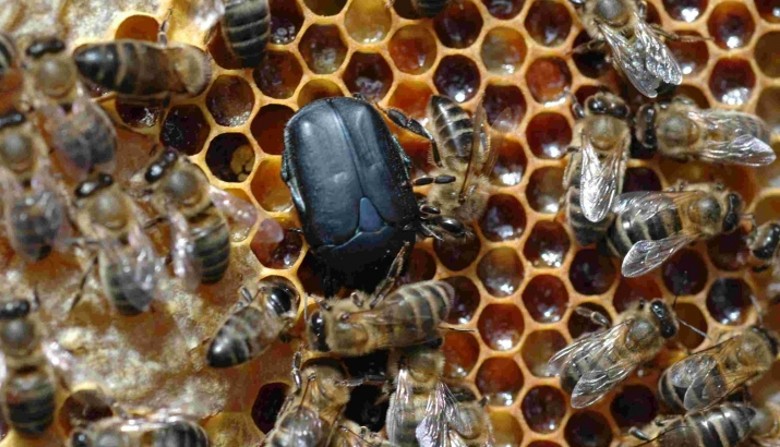This beetle is native to Africa, in the Sub-Saharan region, but has spread, thanks to human beekeeping, to North America, Australia and recently Europe. Now it seems that it has reached this area of Latin America.
The adult beetle is dark brown in color and approximately 5-7 mm long and oval with two distinctive club-shaped antennae. It is a strong flier, it enters the interior of the hives by flying through the entrance, it moves fast. The larva looks superficially similar to the larva of the wax moth. The larvae feed on honey, pollen and eggs, producing galleries in the honeycombs of the hives where they live, compromising their life and turning Aethina tumidaen into a plague called etinosis.
The experts said that this constitutes “a high risk of entry into our territory.” For this reason, the Official Services of the MGAP recommended “maintaining and redoubling attention in the apiaries and especially when checking the hives.” They add that “it is extremely important to prevent the entry or spread of this pest and early detection allows minimizing the negative effects on bee production.”
On November 8, 2022, the Department of Animal Health Surveillance and Defense of Brazil received the notification of suspected presence of PEC in the Municipality of Triunfo, Rio Grande do Sul. As of the notification, the apiary has been interdicted.
State Agricultural Technicians and Veterinary Doctors attended the place to verify the situation and sample. The apiary had 60 hives, which were checked and beetle specimens were detected. Samples were taken and referred to the Federal Laboratory for Agricultural Defense. On December 2, 2022, the identification as Aethina tumida was confirmed.


















